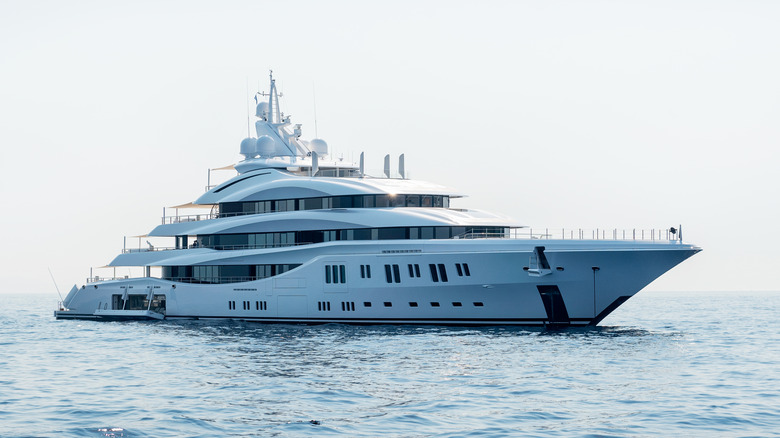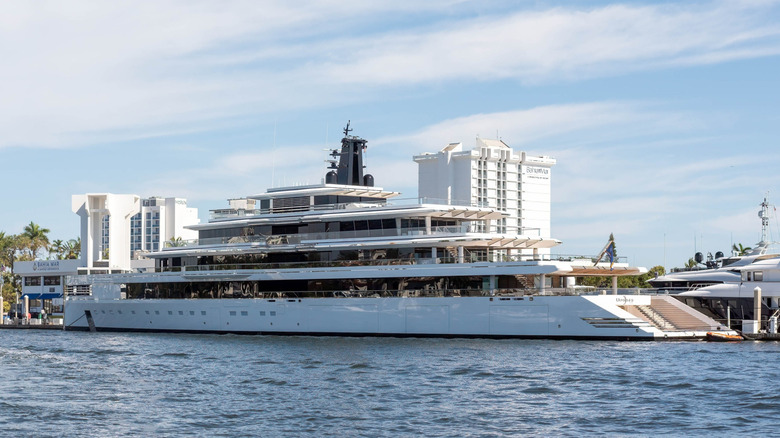Celebrities Love Superyachts - Here's How Much Fuel They Use
These days, it's not enough to simply own a yacht. If you really want to show off to the Joneses, you need to own a superyacht. To be a superyacht, the vessel must be over 100 feet long — and it often comes with a crew, movie theaters, dining rooms, swimming pools, and helicopter landing pads. But environmentalists will not be impressed — superyachts are a massive source of pollution and fuel excess.
A report by The New York Times on billionaires' superyachts revealed that a 200-foot vessel will burn 132 gallons of diesel fuel an hour — just while floating in the water. Every 100 nautical miles, it uses 2,200 gallons. West Nautical's Vessel Manager, Tony Hildrew, noted that fuel is the biggest expense when it comes to owning a superyacht, with the global spend currently at $150 billion annually. The Amadea superyacht model, which is more around 348 feet long, went 8,358 nautical miles in one year — costing $530,000 in fuel costs.
While Hildrew wanted to reassure superyacht hopefuls that there are ways to save on fuel, that's not really comforting to those who care about ocean pollution. One 454-foot superyacht, known as the Rising Sun, releases 16,320 tons of carbon dioxide equivalent gases into the atmosphere every year due to the diesel fuel it uses. This means the owner, DreamWorks Co-Founder David Geffen, generates 800 times the carbon dioxide of the average American. And this is not even close to the largest superyacht in the world.
What determines a superyacht's fuel usage
Every superyacht uses a different amount of fuel and there are a lot of factors that will determine that. The size is an obvious one, with larger superyachts clearly burning more fuel than "smaller" ones. However, the engine, the generator usage, and the amount of toys on board that require fuel will also change the amount of fuel used. Even water conditions will change the fuel usage as well as the travel speed. Fuel calculators are available to determine exactly how much you will burn with your superyacht.
Superyachts can attempt to use less fuel by cruising at efficient and consistent speeds, using a route with calmer sea conditions, and having a lighter load. Regular engine maintenance can also keep fuel consumption down. The top 10% wealthiest people in the world currently account for half the planet's carbon dioxide emissions, with superyachts being their largest source of greenhouse gas emissions. There are around 6,000 superyachts in the world right now, and the top 300 produce 285,000 tons of CO2 emissions alone, more than some countries. While superyachts cost millions of dollars up front, buyers are paying more for annual fuel costs — and the environment is also paying the price.

